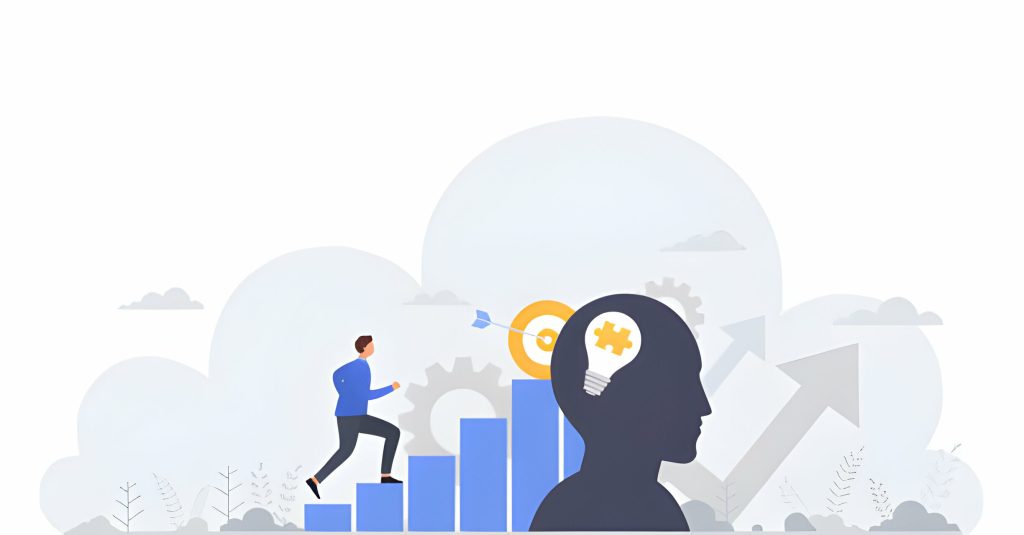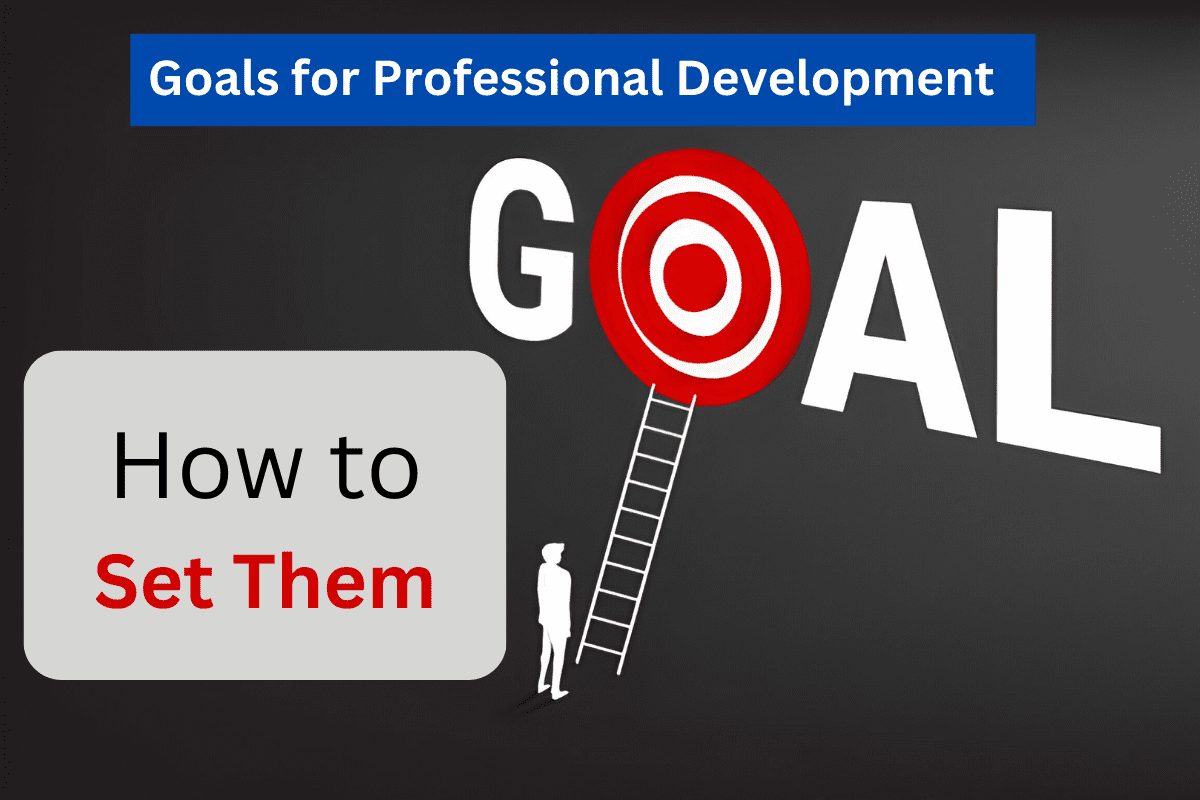Unlocking Success: A Comprehensive Guide to Setting and Achieving Goals for Professional Development

Professional development is a journey marked by continuous learning, growth, and achievement. Setting clear goals for professional development is not only essential but also a powerful strategy to chart your path to success. In this guide, we’ll explore the intricacies of effective goal-setting, providing you with actionable insights to propel your career forward.
Unlocking Success: Navigating Goals for Professional Development
In the ever-evolving landscape of today’s professional world, setting and achieving goals for professional development has become paramount. As we embark on this journey of self-improvement and growth, it’s essential to navigate the intricacies of goal-setting with precision and purpose.
Introduction: Defining Professional Development Goals

Professional development goals encompass a strategic approach to enhancing one’s skills, knowledge, and abilities to foster career advancement. These goals serve as a roadmap, guiding individuals toward continuous improvement in their professional lives. As the workplace landscape evolves, the importance of actively shaping and pursuing these goals has never been more critical.
Setting SMART Goals: A Blueprint for Success
Setting goals is an art, and the SMART criteria provide a structured canvas. Specific, Measurable, Achievable, Relevant, and Time-bound goals form the foundation of effective professional development.
For instance, a specific goal could be acquiring a new certification, and its measurability might be completing the certification within a set timeframe. [Goals for Professional Development.]
Identifying Skill Gaps: A Personal Inventory
Before embarking on the journey of professional development, a self-assessment to identify skill gaps is crucial. Analyzing current skills and comparing them to industry demands helps pinpoint areas that require attention. Prioritizing these areas ensures a focused and effective approach to personal and professional improvement. [Goals for Professional Development.]
Creating a Personal Development Plan: Tailoring to Aspirations
Crafting a personal development plan involves aligning goals with career aspirations. Whether aiming for a leadership role or mastering a specific skill set, the plan should balance short-term achievements with long-term objectives. This tailored approach ensures that each step contributes meaningfully to the overall career trajectory. [Goals for Professional Development.]
Leveraging Resources: Tapping into Opportunities

Professional development extends beyond individual efforts. Leveraging resources such as training programs, courses, and workshops is essential. Networking and mentorship opportunities offer valuable insights and guidance. Collaborating with seasoned professionals enriches the learning experience and provides a broader perspective. [Goals for Professional Development.]
Overcoming Challenges: Navigating Roadblocks
Challenges are inevitable in any pursuit of excellence. Recognizing common obstacles in professional development, such as time constraints or initial setbacks, allows for proactive strategies.
Whether through resilience, adaptability, or seeking support, overcoming challenges becomes an integral part of the developmental journey. [Goals for Professional Development.]
Tracking Progress: The Importance of Monitoring and Evaluation
Regularly monitoring and evaluating progress are vital components of effective goal pursuit. Establishing measurable milestones enables individuals to gauge their advancement. Adjustments to goals can be made based on insights gained during this monitoring process, ensuring alignment with evolving career aspirations.
The Role of Feedback: A Continuous Improvement Cycle

Feedback acts as a compass, guiding professionals toward improvement. Actively seeking constructive feedback from peers, mentors, or supervisors facilitates a continuous improvement cycle. Integrating this feedback into development plans enhances the effectiveness of chosen strategies and approaches.
Continuous Learning Mindset: Embracing Lifelong Learning
In a rapidly changing world, a continuous learning mindset is indispensable. Embracing lifelong learning ensures that professionals stay adaptable in industries marked by innovation and evolution. Pursuing new knowledge and staying informed about industry trends become habits ingrained in the developmental journey. [Goals for Professional Development.]
Balancing Work and Development: Time Management Strategies

Effectively balancing daily work responsibilities with developmental pursuits requires strategic time management. Strategies such as prioritization, effective delegation, and setting realistic timelines allow professionals to integrate development seamlessly into their daily routines.
Measuring Success: Metrics for Professional Development
Measuring success in professional development involves defining clear metrics. Whether it’s the acquisition of a new skill, the successful completion of a project, or achieving a leadership position, these measurable outcomes serve as indicators of progress and success. [Goals for Professional Development.]
Celebrating Milestones: Acknowledging Achievements
Acknowledging and celebrating milestones is an essential aspect of the professional development journey. Whether big or small, each achievement represents progress. Celebrating these milestones not only provides a sense of accomplishment but also motivates individuals to strive for further success.
Conclusion: Navigating the Path to Success
In conclusion, the journey of setting and achieving goals for professional development is both a personal and professional odyssey. By following a strategic roadmap, encompassing self-awareness, effective planning, resource utilization, and a commitment to lifelong learning, individuals can unlock the doors to success. The path may be challenging, but the rewards of enhanced skills, career advancement, and personal fulfillment make the journey worthwhile. [Goals for Professional Development.]
What are Professional Goals Examples
Professional goals examples vary based on individual career paths and aspirations. They often include objectives related to career advancement, skill development, and personal growth.
For instance, a professional might aim to secure a leadership role within their organization, attain a specific certification to enhance expertise or expand their professional network through networking events.
Goals can also focus on achieving measurable results, such as completing a successful project, increasing sales targets, or launching innovative initiatives. The key is to align professional goals with one’s overarching career vision, ensuring they contribute to long-term success and fulfillment.
Smart Goals for Professional Development
SMART goals for professional development are Specific, Measurable, Achievable, Relevant, and Time-bound, forming a strategic framework for career growth. Specific goals pinpoint precise skills or areas for improvement, such as acquiring a new certification or enhancing leadership abilities.
Measurable criteria allow individuals to track progress objectively, ensuring clarity on what success looks like. Achievability ensures that goals are realistic and feasible within the given context.
Relevant goals align with the individual’s career aspirations, contributing directly to their professional advancement. Time-bound elements establish a clear timeframe for goal completion, fostering a sense of urgency and accountability. Smartly crafted professional development goals empower individuals to navigate their career journey with purpose and success. [Goals for Professional Development.]
Personal Development Goals Examples
Personal development goals examples encompass a wide range of aspirations aimed at enhancing one’s overall well-being and life satisfaction. [Goals for Professional Development.]
These goals can include improving communication skills, cultivating emotional intelligence, adopting healthier lifestyle habits, or seeking personal growth through learning new hobbies or skills.
They may also involve building resilience in the face of challenges, fostering meaningful relationships, or achieving a better work-life balance. Personal development goals are highly individualized, reflecting an individual’s desire for continuous improvement and self-discovery in various aspects of their life.
Professional Development Goals for Teachers

Personal development goals examples encompass a wide range of aspirations aimed at enhancing one’s overall well-being and life satisfaction.
These goals can include improving communication skills, cultivating emotional intelligence, adopting healthier lifestyle habits, or seeking personal growth through learning new hobbies or skills. [Goals for Professional Development.]
They may also involve building resilience in the face of challenges, fostering meaningful relationships, or achieving a better work-life balance. Personal development goals are highly individualized, reflecting an individual’s desire for continuous improvement and self-discovery in various aspects of their life.
[Goals for Professional Development.]
professional development plan examples
Professional Development Plan Examples
Professional development plans are tailored strategies designed to enhance an individual’s skills, knowledge, and overall career growth.
Examples of such plans may involve pursuing advanced education, attending relevant workshops and conferences, obtaining industry certifications, and participating in mentorship programs.
Additionally, setting specific goals for acquiring new technical skills or improving leadership and communication abilities can be integral to a professional development plan.
Networking with industry professionals, engaging in cross-functional projects, and seeking opportunities for career advancement are also common components.
A well-crafted professional development plan aligns with an individual’s career aspirations, providing a roadmap for continuous improvement and success in the professional realm.
FAQs: Addressing Common Questions on Professional Development Goals
- How do I determine which professional development goals are most relevant to my career?
- Assess your current skills, identify areas for improvement, and align goals with your long-term career aspirations. [Goals for Professional Development.]
- What role does networking play in professional development?
- Networking provides valuable insights, mentorship opportunities, and a supportive community that enhances the learning experience.
- How can I overcome challenges in professional development, such as time constraints?
- Prioritize goals, delegate tasks when possible, and explore time management strategies to create dedicated time for development.
- What are the key metrics to measure success in professional development?
- Metrics vary based on goals but can include acquiring new skills, completing certifications, successful project outcomes, and career advancements.
- **How important is it to celebrate small milestones in professional development?**
- Celebrating small milestones fosters a positive mindset, boosts motivation, and reinforces a sense of accomplishment throughout the journey.
[Goals for Professional Development.]

I’m based in the USA, Canada, Australia, and the UK—four vibrant countries with rich educational landscapes and diverse news ecosystems.
Feel free to adjust and personalize this introduction to reflect your unique voice and experiences. Happy writing! 📝✨

